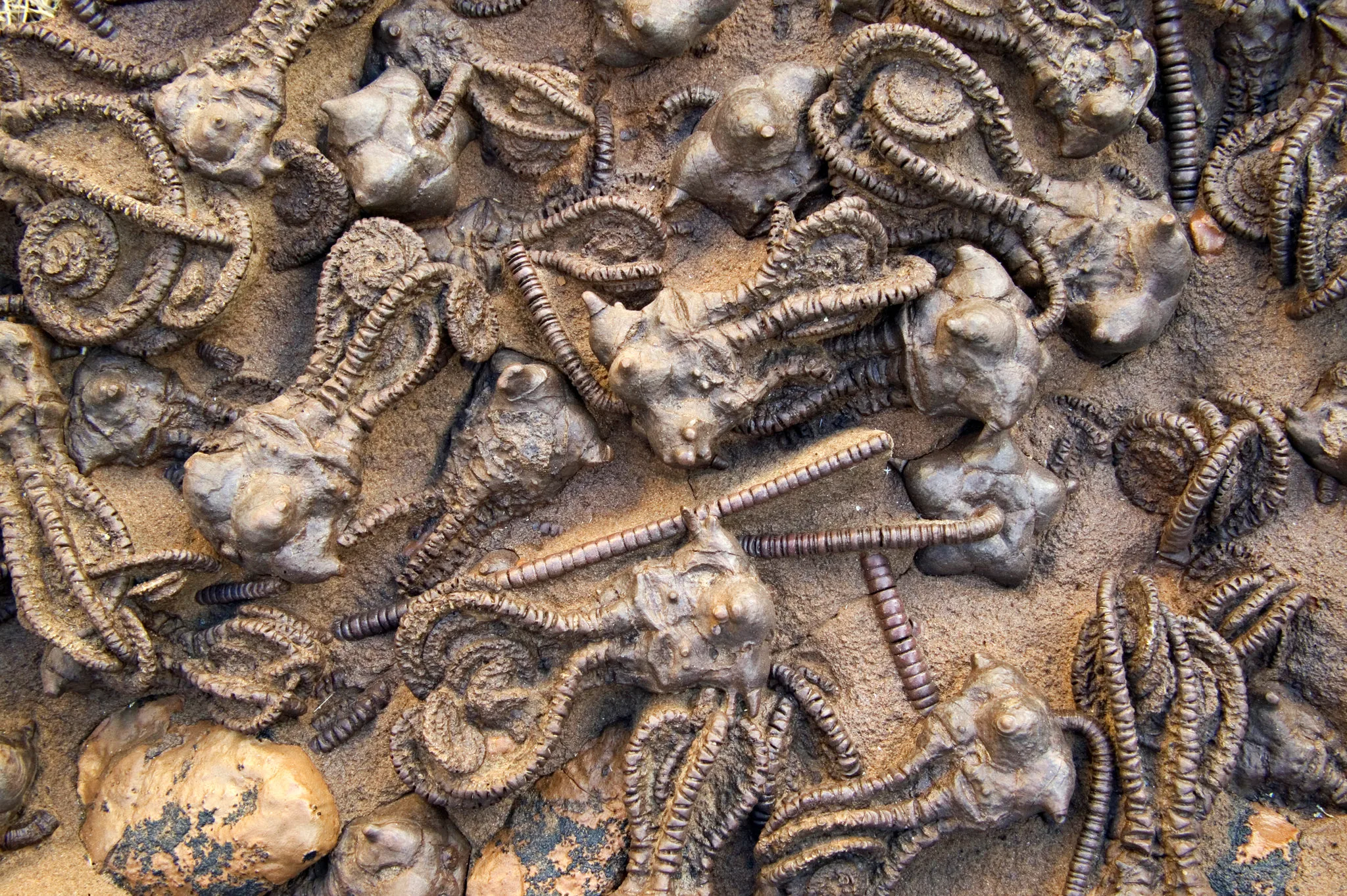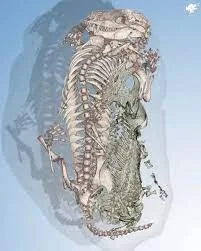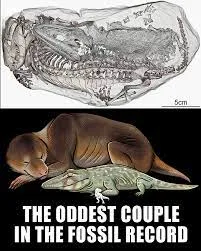A Moment of Refuge: The Broomistega and Thrinaxodon Fossil
About 250 million years ago, during the Permian-Triassic extinction event—often called the Great Dying—life on Earth teetered on the brink. This cataclysmic event, the most severe mass extinction in our planet’s history, wiped out nearly 90% of marine species and 70% of terrestrial vertebrates. Amid this hostile, desolate world, a remarkable story of survival and coexistence unfolded, preserved for millennia in a single fossil.

A Desperate Refuge
In what is now South Africa’s Karoo Basin, a small, injured amphibian called Broomistega sought shelter. This temnospondyl, a distant relative of modern amphibians, was likely weakened by injury or the harsh environment of a world ravaged by volcanic activity, climate shifts, and collapsing ecosystems. Stumbling upon the burrow of a Thrinaxodon, a cynodont and early ancestor of mammals, the Broomistega found temporary sanctuary. The Thrinaxodon, curled up in a state of torpor or sleep, was unaware of the chaos outside—or of its unexpected guest.

In this cramped burrow, two vastly different creatures—one a sprawling amphibian, the other a proto-mammal—shared a fleeting moment of peace. They were not allies, nor even aware of each other’s presence, but unwilling companions bound by a shared need to survive in a world falling apart.
Frozen in Time
Their fragile truce was cut short by a sudden flood, likely triggered by heavy rains in the unstable post-extinction landscape. A torrent of mud engulfed the burrow, entombing the Broomistega and Thrinaxodon together. This tragic end, however, preserved their story in extraordinary detail, sealing their remains in a fossil that would remain untouched for 250 million years.

Rediscovery Through Technology
In 2011, paleontologists uncovered this remarkable fossil, a rare snapshot of interspecies coexistence. Traditional analysis might have overlooked the nuances of their story, but advanced synchrotron scanning—a high-resolution imaging technique using X-rays—revealed the intricate details of their preserved skeletons. The scans showed the Broomistega’s broken ribs, suggesting injury, and its position nestled within the Thrinaxodon’s burrow, indicating a moment of refuge rather than conflict.

A Poignant Glimpse of Resilience
The Broomistega and Thrinaxodon fossil is more than a scientific curiosity; it’s a poignant testament to life’s tenacity. In the midst of the Great Dying, when ecosystems collapsed and survival hung by a thread, these two creatures found a fleeting moment of shelter together. Their story, preserved by chance and revealed through modern technology, underscores a universal truth: even in the darkest moments, life finds ways to endure, adapt, and coexist.

This fossil serves as a reminder of the resilience of life against overwhelming odds. The Broomistega and Thrinaxodon, unlikely companions in a buried burrow, offer a humbling glimpse into a time when survival demanded ingenuity and, sometimes, an unspoken truce.



